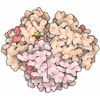Entry Database : PDB / ID : 5onrTitle Alzheimer's Amyloid-Beta Peptide Fragment 1-40 in Complex with Thermolysin Amyloid-beta A4 protein Thermolysin Keywords / / / Function / homology Function Domain/homology Component
/ / / / / / / / / / / / / / / / / / / / / / / / / / / / / / / / / / / / / / / / / / / / / / / / / / / / / / / / / / / / / / / / / / / / / / / / / / / / / / / / / / / / / / / / / / / / / / / / / / / / / / / / / / / / / / / / / / / / / / / / / / / / / / / / / / / / / / / / / / / / / / / / / / / / / / / / / / / / / / / / / / / / / / / Biological species Bacillus thermoproteolyticus (bacteria)Homo sapiens (human)Method / / / Resolution : 1.39 Å Authors Leite, J.P. / Gales, L. Journal : FEBS Lett. / Year : 2019Title : Alzheimer's A beta1-40peptide degradation by thermolysin: evidence of inhibition by a C-terminal A beta product.Authors : Leite, J.P. / Gales, L. History Deposition Aug 4, 2017 Deposition site / Processing site Revision 1.0 Aug 29, 2018 Provider / Type Revision 1.1 Feb 6, 2019 Group / Database references / Category Item _citation.country / _citation.journal_abbrev ... _citation.country / _citation.journal_abbrev / _citation.journal_id_ASTM / _citation.journal_id_CSD / _citation.journal_id_ISSN / _citation.journal_volume / _citation.page_first / _citation.page_last / _citation.pdbx_database_id_DOI / _citation.pdbx_database_id_PubMed / _citation.title / _citation.year Revision 1.2 Jan 17, 2024 Group Data collection / Database references ... Data collection / Database references / Derived calculations / Refinement description Category chem_comp_atom / chem_comp_bond ... chem_comp_atom / chem_comp_bond / database_2 / pdbx_initial_refinement_model / pdbx_struct_conn_angle / struct_conn Item _database_2.pdbx_DOI / _database_2.pdbx_database_accession ... _database_2.pdbx_DOI / _database_2.pdbx_database_accession / _pdbx_struct_conn_angle.ptnr1_auth_seq_id / _pdbx_struct_conn_angle.ptnr3_auth_seq_id / _pdbx_struct_conn_angle.value / _struct_conn.pdbx_dist_value / _struct_conn.ptnr1_label_atom_id / _struct_conn.ptnr2_auth_seq_id / _struct_conn.ptnr2_label_asym_id
Show all Show less
 Yorodumi
Yorodumi Open data
Open data Basic information
Basic information Components
Components Keywords
Keywords Function and homology information
Function and homology information
 Homo sapiens (human)
Homo sapiens (human) X-RAY DIFFRACTION /
X-RAY DIFFRACTION /  SYNCHROTRON /
SYNCHROTRON /  MOLECULAR REPLACEMENT / Resolution: 1.39 Å
MOLECULAR REPLACEMENT / Resolution: 1.39 Å  Authors
Authors Citation
Citation Journal: FEBS Lett. / Year: 2019
Journal: FEBS Lett. / Year: 2019 Structure visualization
Structure visualization Molmil
Molmil Jmol/JSmol
Jmol/JSmol Downloads & links
Downloads & links Download
Download 5onr.cif.gz
5onr.cif.gz PDBx/mmCIF format
PDBx/mmCIF format pdb5onr.ent.gz
pdb5onr.ent.gz PDB format
PDB format 5onr.json.gz
5onr.json.gz PDBx/mmJSON format
PDBx/mmJSON format Other downloads
Other downloads 5onr_validation.pdf.gz
5onr_validation.pdf.gz wwPDB validaton report
wwPDB validaton report 5onr_full_validation.pdf.gz
5onr_full_validation.pdf.gz 5onr_validation.xml.gz
5onr_validation.xml.gz 5onr_validation.cif.gz
5onr_validation.cif.gz https://data.pdbj.org/pub/pdb/validation_reports/on/5onr
https://data.pdbj.org/pub/pdb/validation_reports/on/5onr ftp://data.pdbj.org/pub/pdb/validation_reports/on/5onr
ftp://data.pdbj.org/pub/pdb/validation_reports/on/5onr


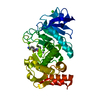
 Links
Links Assembly
Assembly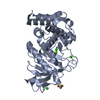
 Components
Components
 Homo sapiens (human) / References: UniProt: P05067*PLUS
Homo sapiens (human) / References: UniProt: P05067*PLUS






 X-RAY DIFFRACTION / Number of used crystals: 1
X-RAY DIFFRACTION / Number of used crystals: 1  Sample preparation
Sample preparation SYNCHROTRON / Site:
SYNCHROTRON / Site:  ESRF
ESRF  / Beamline: ID30B / Wavelength: 0.97264 Å
/ Beamline: ID30B / Wavelength: 0.97264 Å Processing
Processing MOLECULAR REPLACEMENT
MOLECULAR REPLACEMENT Movie
Movie Controller
Controller


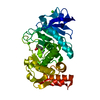
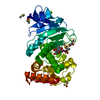
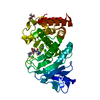
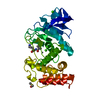
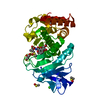
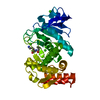
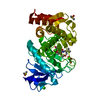
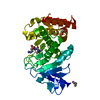
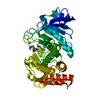

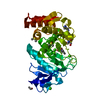

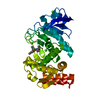
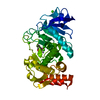
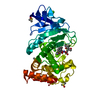
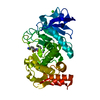
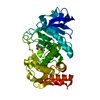
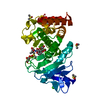

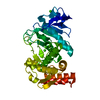
 PDBj
PDBj









